The sunken museum adjoining Humayun’s Tomb in the capital is finally open after a nine-year artistic endeavour. Sunday mid-day gets an education in retelling history in a digestible manner
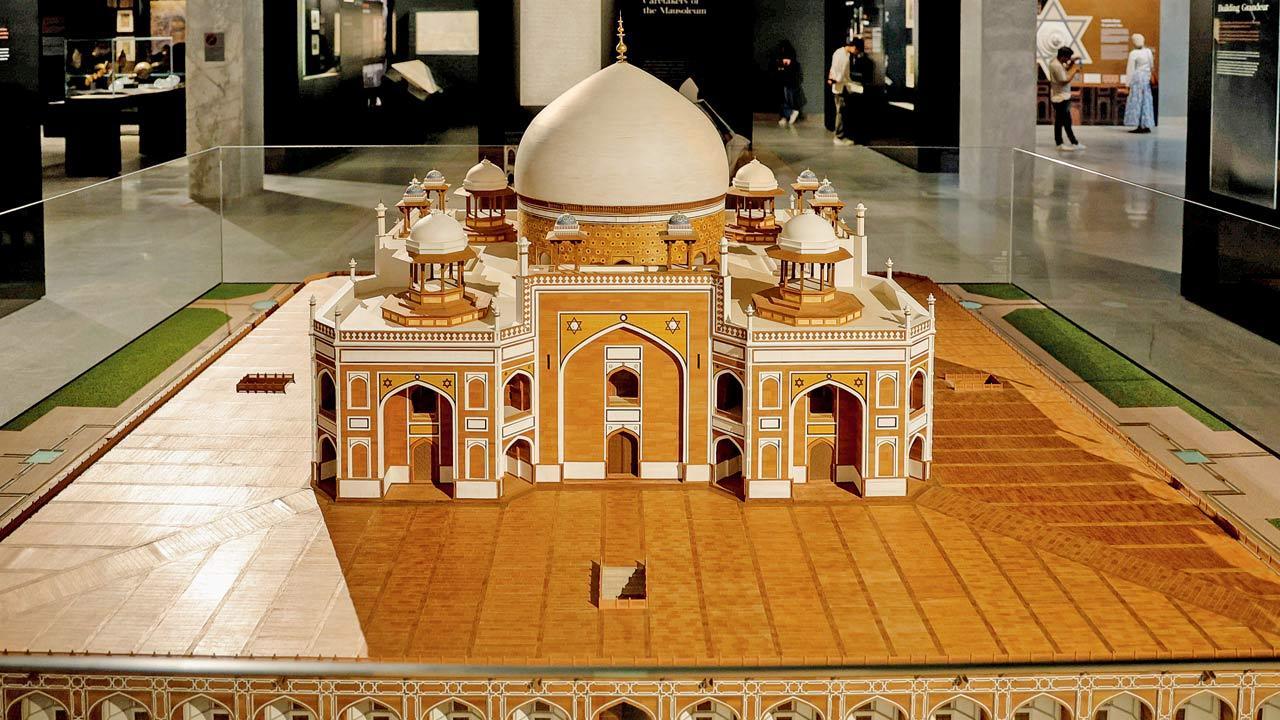
An architectural model of Humayun’s Tomb. Pics/Nishad Alam
When work started on the Humayun’s tomb museum back in 2015, few people involved would have imagined it would take as long as it has. The museum was supposed to be ready in 30 months; instead, it has taken almost a decade. “It wasn’t easy,” says Ratish Nanda, CEO of the Aga Khan Trust for Culture, who were in charge of the project. “We were taking a real risk, building a museum unlike any the country had seen before. Some 30 companies collaborated on the process. Still, only a small percentage of the research we did is on display yet.”
Iconic edifices bear the imprint of time. Much like the structure it has come up adjacent to, the museum has witnessed political churn, a city on edge, and the scourge of a generational pandemic. On the other side, it is the latest pearl adorning Delhi’s syncretic, pluralistic crown.
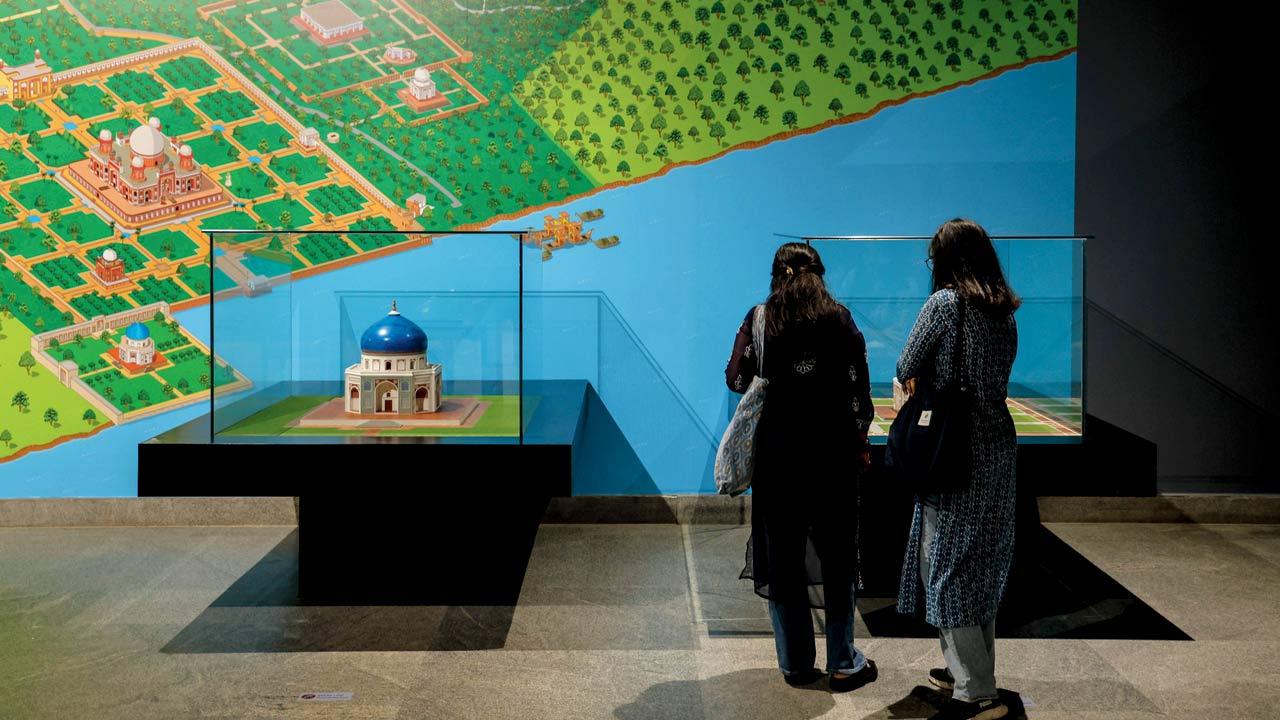 1 An illustrated mural of the Humayun’s Tomb world heritage site, Nizamuddin Basti and Sunder Nursery
1 An illustrated mural of the Humayun’s Tomb world heritage site, Nizamuddin Basti and Sunder Nursery
Of the many bustling roads in the Nizamuddin area, one quietly leads towards the new sunken museum. It now forms the connecting tissue between Sunder Nursery and the second Mughal emperor’s tomb. Inside the relatively modest structure, originally called an interpretation centre, a couple of ramps—much like the city’s baolis or stepwells—descend into the basement. It’s like entering a sacred chalice where the rustling noise of the streets dissolves into the stunned silence of a colossal space. Stunned because nothing prepares you for the scale and grandeur that the underground—some six metres below the surface—unleashes.
The exhibit is divided into five galleries featuring audio-visual contraptions, actual scale structures, miniature models, gigantic illustrations, artefacts and an immersive theatrical corner. The principal gallery is, of course, dedicated to the man whose resting place can be found just across the road. “It’s a truly modern museum,” Nanda says, “And given the area’s rich history, there’s so much to say and show that the museum demanded the collaboration of many disciplines.”
 2 The dargah complex, and a scaled model showing its evolution from 14th to 19th century
2 The dargah complex, and a scaled model showing its evolution from 14th to 19th century
Some 500 artisans have worked on recreating replica of tomb ceilings—including that of the Nila Gumbad—at actual scale. But Nanda maintains that re-engineering artefacts, regardless of scale, was probably the easier bit. Building the museum was the actual challenge.
Other than the fact that Nizamuddin is an incredibly busy area, it also hosts a significant floating population of tourists and visitors. The tomb museum represents a unique effort to bridge experience and learning, witnessing and seeing. To which effect, the physiological experience of studying the exhibition and absorbing its spatial awareness is an event in itself. “The intent of the landscape design is to illustrate and interpret the rich traditions of design and planting associated with gardens of the Mughal period,” Yogesh Kapoor, of Shaheer Associates who were responsible for the landscape design, says. Kapoor explains how even the margins of the museum space have been accorded the care of history. Every instance you look away from an installation, your gaze falls on runnels of water, silently filtering through a carefully designed cascade on the outside. It’s being submerged in history and sieved through it, all at once.
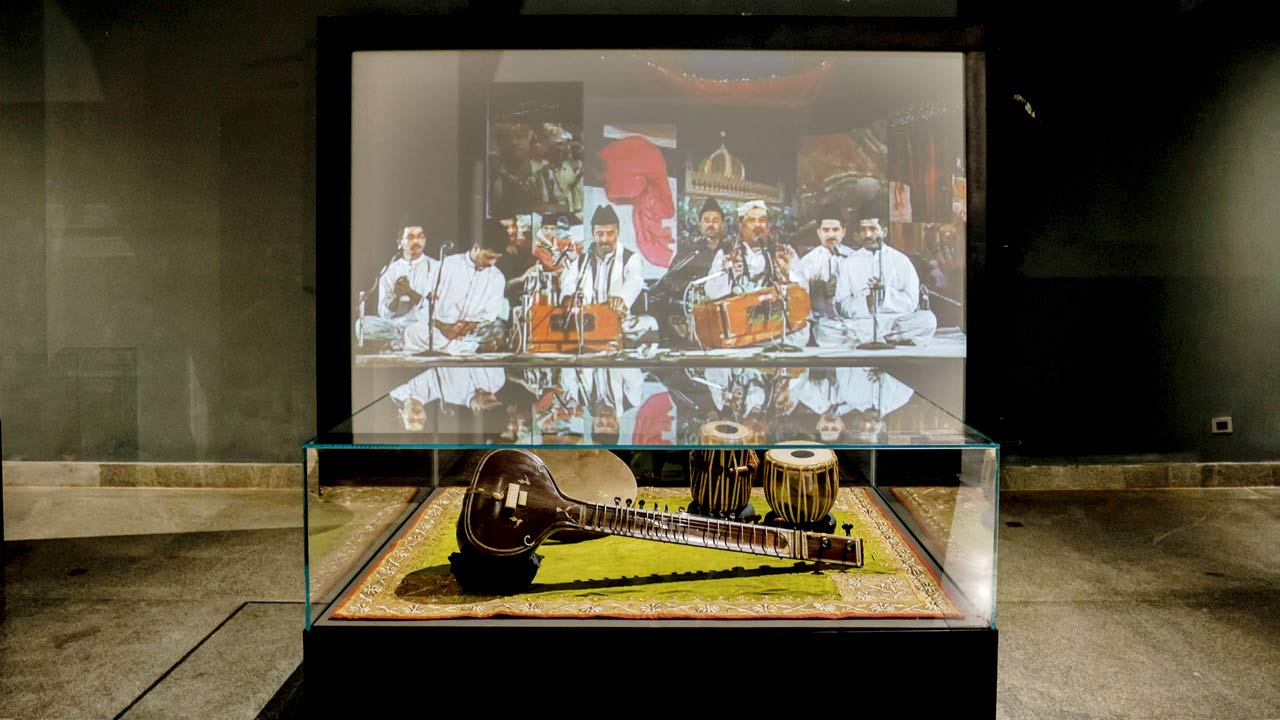 3 Modern renditions of Khusrao’s qawwali, who is also the inventor of table and the sitar
3 Modern renditions of Khusrao’s qawwali, who is also the inventor of table and the sitar
Part of what makes the museum exhibit unique, despite familiar reappearances of artefacts—pages from the famed Baburnama for example—is the personalisation of Mughal history. Beyond the labels of conquest and bravado, territory and treachery, the Mughals also practised art, science and uniquely endearing social rituals. Beyond emperors and their challengers, were poets, astronomers, and sufi saints. Some of them make the cut in what is by no means an exhaustive account of history. Humayun’s travels across Asia and beyond – some 34,000 kilometres—are contextualised through objects and influences he collected along the way. A section dedicated to Dara Shikoh—Shah Jahan’s eldest son —breathes life into his unorthodoxy and interest in Upanishads (which he translated) with the help of carefully preserved scripts. Poet and Sufi saint Amir Khusrau’s Qawwali is both a textual and audio visual experience with performances from the close-by dargah playing over a giant console. The sultanate’s exploration of astrology, astronomy, and the sciences lend the exhibition character. Enough to make history malleable, so it sports shades as opposed to ungainly edges.
To condense it all into meaning, however, the visual design must act as a vessel. It’s what makes the museum startling, informative yet rarely overbearing as a visual experience. “We had to maintain the sanctity of the site, the heritage of the place this was going to be set in,” Siddhartha Chaturvedi, who has led the exhibition design, says. Each wall, he explains, acts as a monolithic drawing board to assimilate elements, objects, and build stories around them. One of the largest murals takes up an entire wall and illustrates in granular, awe-striking detail, the visual map of the Nizamuddin area. “We had to create one of the largest murals I have ever worked on, at home, during the pandemic. That’s the kind of adventure this has been,” Chaturvedi adds.
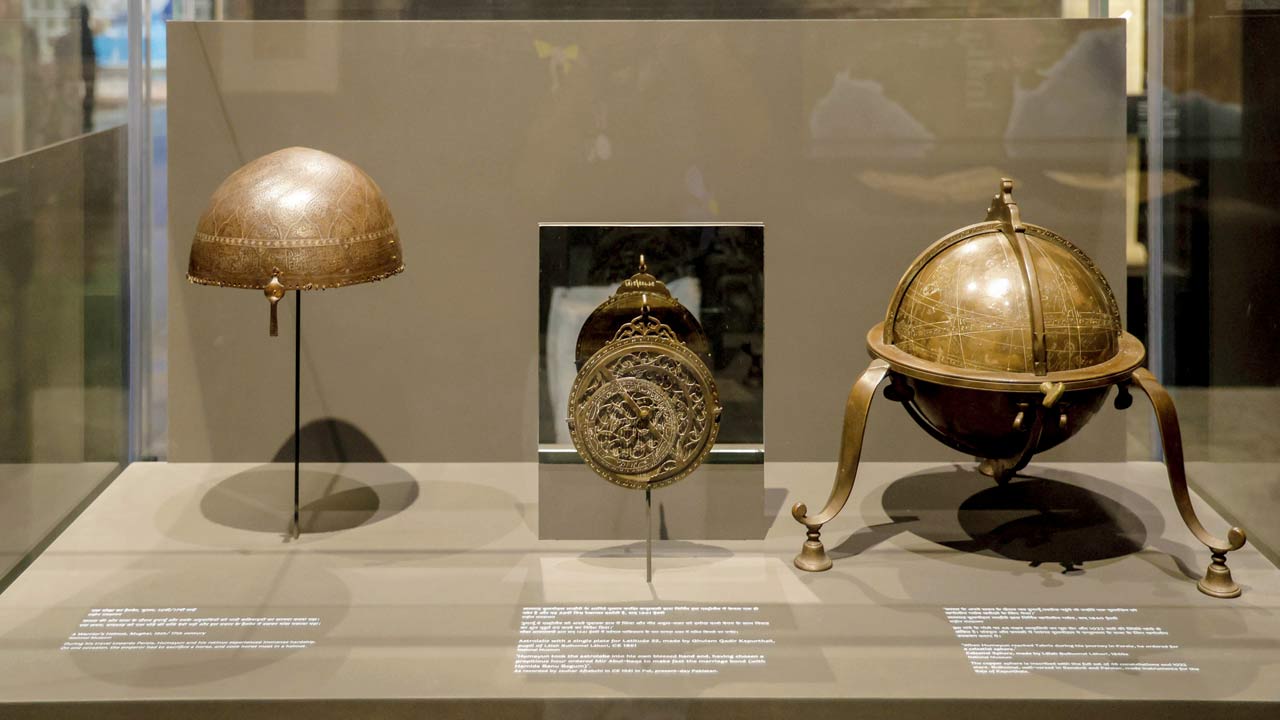 4 An astrolabe, a celestial sphere and a helmet—all symbols of Humayun’s travels, beliefs and life
4 An astrolabe, a celestial sphere and a helmet—all symbols of Humayun’s travels, beliefs and life
The museum has a number of new artefacts on display, including possibly for the first time, currency charting the entirety of the Mughal dynasty. Currency, Nanda complains, isn’t given “the artistic merit it should”. To contrast that sort of fine detail, the restored 18-foot-tall finial from the tomb anchors the centre of the principle gallery. Every square foot of grandeur is matched by equally intricate specimens of design, research, and expression. So much can still, and probably will, be said. For now, though, a rich, colourful history exerts in the relative silence of the underground, an absorbing homage to majesty.
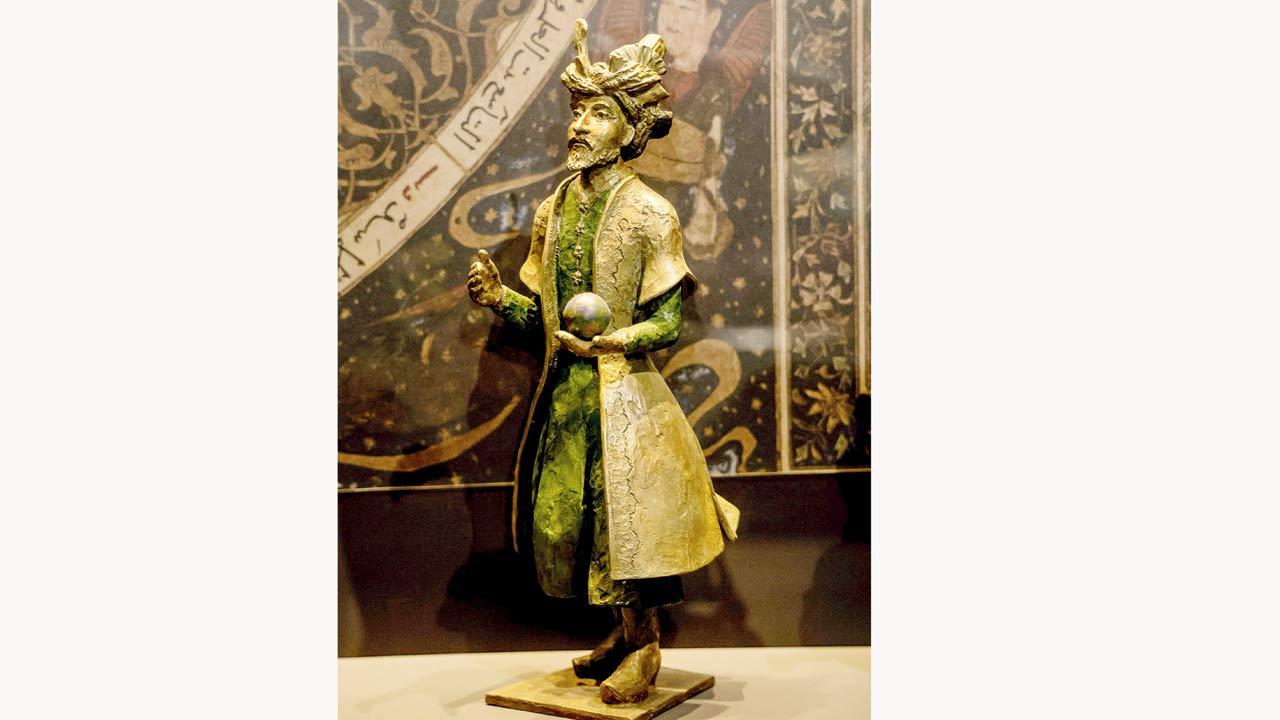 Humayun wearing green on Friday. Sculpture by Jill Watson
Humayun wearing green on Friday. Sculpture by Jill Watson
The plan, going forward, is to add more galleries, interactive libraries, and maybe even a café or two to spruce up the economics. Nanda explains that museums rarely break-even, but with the right mix of creativity, intrigue and collaboration from around the world, this one should do so in a couple of years. “A year later, I can promise you the museum will be grander, livelier and denser in the amount of detail on display,” he says. It would be a big ask, given what has already taken a decade. But Nizamuddin wasn’t built in a day. It was built over decades, with culture streaming through the veins of Mughal tradition. Tradition that Nanda believes, needs to be understood “through stories rather than just objects.” It’s the one promise Humayun’s tomb museum undeniably delivers on.
6 metres
depth at which the museum is located
 Subscribe today by clicking the link and stay updated with the latest news!" Click here!
Subscribe today by clicking the link and stay updated with the latest news!" Click here!










